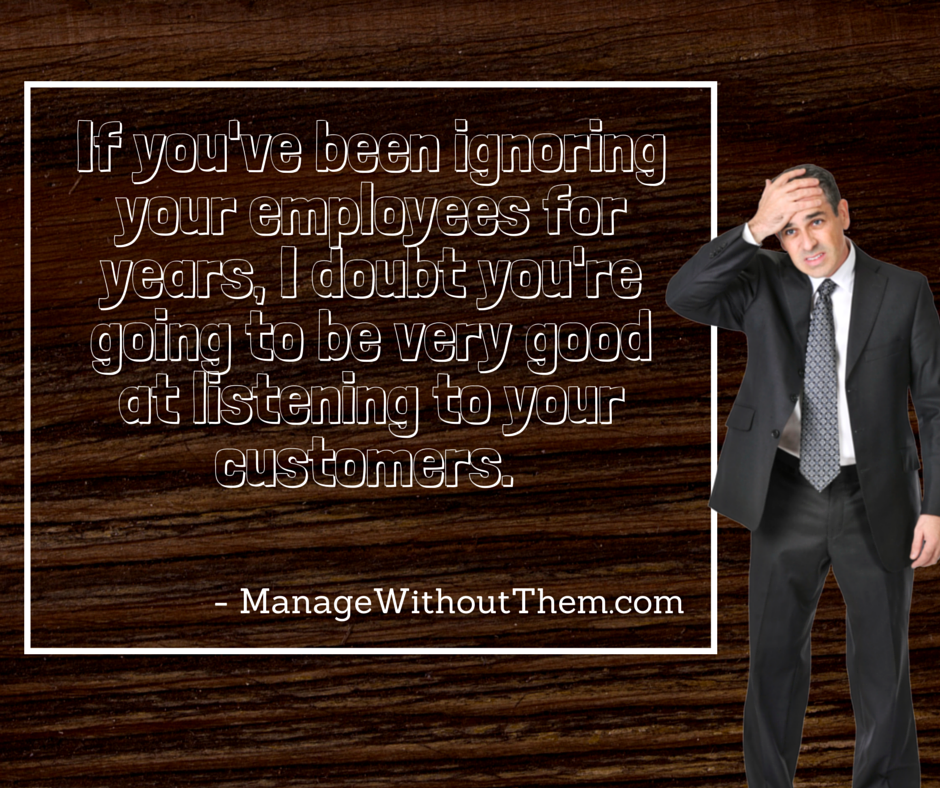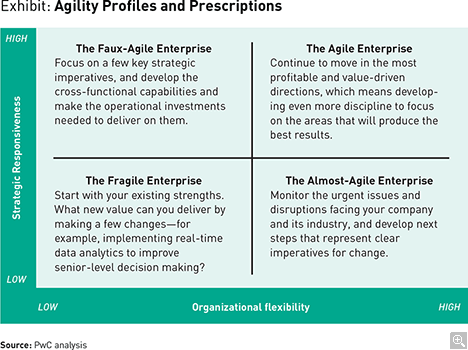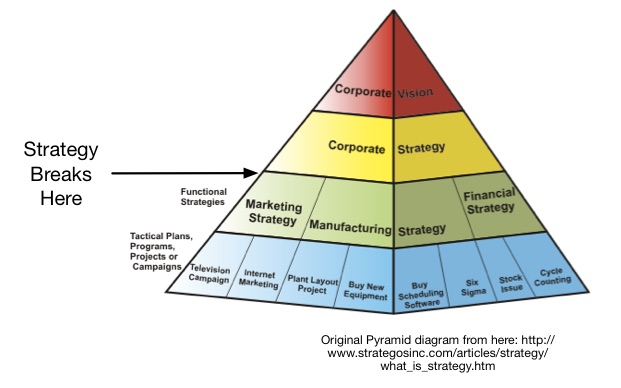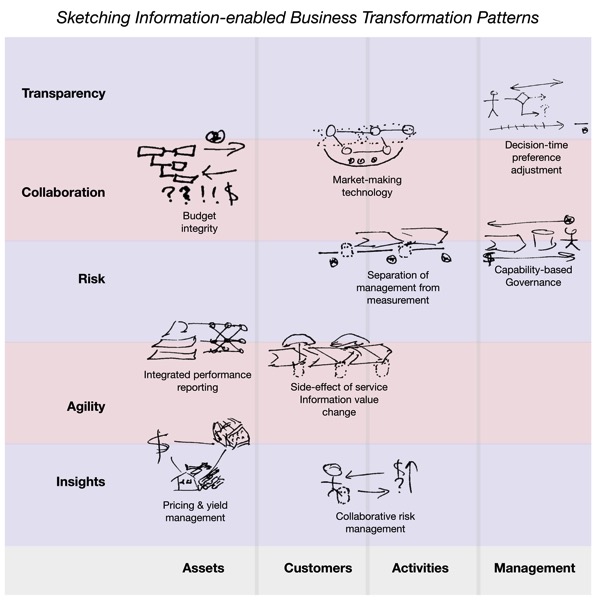
Category: Uncategorized Page 4 of 11
This is the topic I have in mind for the June boardroom seminar. I’m not planning to start pulling together the presentation until we agree this is a suitable topic for a seminar. So can you please let me know if it makes the cut?
Topic: The Information Side of the Enterprise Design Equation Summary (early draft):
“In the last 40 years the IT industry has grown from being essentially a hobby to being the driver of competitive advantage and customer intimacy. “Digital” is the new way to engage with tech-savey, mobile, millennials who switch brands faster than you can update your apps.
But the way we deliver technology-enabled business transformation still treats technology as a hobby, and customer experience as a “user problem”. Large corporations still spend too much of the program budget on planning, governance, and politics whereas a start-up would simply build a minimal viable product to prove their business model with real customers.
But the problem is deeper than that. Large corporations shouldn’t mirror start-ups. In fact, corporations who plan to compete based on what they can achieve in a 4 week “sprint” are destined to fail. Large corporations need to compete based on their core competencies and unique, hard-to-replicate capabilities – just like they always have.
The challenge is understanding that very little of what currently underpins a corporation’s competitive advantage is actually “hard to replicate”. It will always be easier to copy an existing business capability than it is to build it from scratch. Corporations can acquire people, process excellence, and technology easily and from the most competitively priced global markets.
The only exception is “information”. Organisations generate unique and specific information sets during the course of operating their day-to-day business. To the extent that each business is unique, the information that they produce is unique. With uniqueness comes competitive advantage.
This seminar will help you uncover the information that is unique to your organisation and to then exploit that information to your competitive advantage. It’s simple. It’s agile. And it’s deeply embedded into the way your organisation delivers value to its customers. Learn how you can drive value from your information assets.”
Regards,
Matthew De George
Principal Consultant
SMS Management & Technology
+ Empowering Business
M 0416 275 237 matthew.degeorge
About SMS
SMS Management & Technology is a leading Asia-Pacific consulting, technology and managed services firm. DESIGN > BUILD > OPERATE
I love this:
http://www.strategy-business.com/article/00316?pg=all
If we just ensure “mechanisms in place for sensing potentially disruptive forces and taking advantage of them before the competition” (Strategic Responsiveness) and forget “ the company needs to be able to retool and rework the most necessary activities, often within a few weeks or months” (Organisational flexibility) we are missing the point of digital transformation.
I would suggest anybody who is purely focusing on improving “agility” – and forgetting the hard work of actual change – is in the “Faux-Agile” quadrant. You’ll recognise them by their constant “you don’t get it” refrain.
Slides 18, 19, 20 in particular are very interesting
The original pyramid diagram is from here.
The above view is a not uncommon view of how corporate strategy is supposed to be translated to execution.
The problem is that arbitrary conversion to “functional strategies”. Increasingly, the functional organisation is dead.
So why translate corporate strategy to functional strategies?
Instead, translate corporate strategy to business capability strategies as per the MWT/Transforms approach.
Market-based management for labour markets and labour curation
This is interesting enough, I guess:
“While much attention has been given to ensuring the technical requirements for the project are delivered, the project team should also adequately plan for business transformation aspects of the implementation,” he wrote. “This includes the management of structural and process changes arising from the project, the delivery of adequate training around the new system and processes to end users, and ensuring appropriate support arrangements are in place.”
From: http://www.itnews.com.au/News/397958,nsw-transport8217s-mammoth-sap-overhaul-hits-delays.aspx
But I actually believe EPR implementations such as this have given “business transformation” a bad name.
An ERP implementation is a large and significant piece of work. I’d also agree that there are many aspects of an ERP implementation beyond the “technical requirements”. However, that doesn’t not make it a “business transformation”.
Typically, what is called “business transformation” for an ERP implementation is standardisation of business process (which is good) and compensation for failings in the product being implemented by changing business processes and then calling it “transformation” (not so good).
When I mention this I sometimes get told I “don’t get” ERP implementations. But by the time the ERP implementation is finished people usually understand what I mean……
Google it.
Good overview of how natural capitalism – I.e. Full resource lifecycle accounting – will save the world.
Artificial intelligence meets the C-suite
Of course AI / big data will hit the C suite. In fact it might replace some executive roles – or at least force them to change.
A large part of [poor] executive management is asking the organisation to simplify and structure everything in order to ease executive decision-making.
How often do you have to simplify something for an executive audience? How often are you communicating excessively to achieve what you think is a simple decision?
I’m not saying good quality executives aren’t required. I’m just saying that executive management is as obsolete as big data is hard. Currently big data is pretty hard – but that’s changing.




